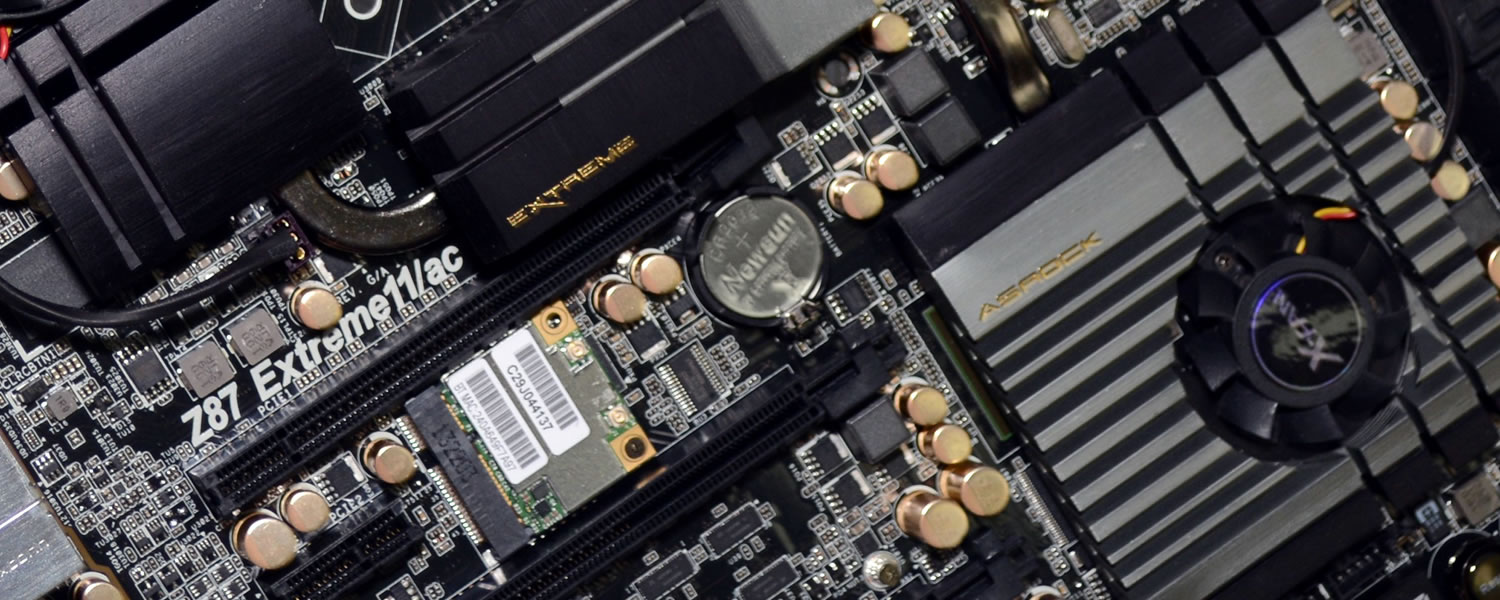Out of the Box, Layout & Design
Back in the day, I remember opening up a motherboard box and finding all kinds of goodies, from USB brackets to eSATA cables. These days you are lucky to get the bare essentials for connecting up basic hardware to the motherboard.
I recently purchased the premium Gigabyte F2A85XN-Wi-Fi motherboard which only came with a pair of SATA cables and an antenna for the wireless card. Although that's a Mini-ITX board, when you look at most desktop motherboards the packages aren't much better. This is where the extreme motherboards such as the Z87 Extreme11/ac stand out.
For over $500, you'd expect the Z87 Extreme11/ac to come with more than a few SATA cables and Asrock doesn't disappoint. Besides basics like an I/O shield and a manual, the board ships with ten SATA data cables, two SATA power cables, four SLI bridges, the Wi-SD Box, a USB 3.0 cable and a case badge.
Extreme11/ac Board Design
In general, Z87 motherboards adhere to the standard ATX specification of 305 × 224mm, which would be surprisingly compact in this case. Meanwhile, the MSI Z87 XPower is the biggest board we know of at 345 x 262mm (XL ATX), but Asrock didn't have to take things that far fortunately with its board stretching 305 x 265mm, which falls into the EATX (Extended ATX) category.
Asrock has made the most of the extra room by employing its first class 12 Power Phase, Digi Power VRM design and Dual-Stack MOSFET (DSM). By adopting digital pulse-width modulation (PWM), the Asrock motherboard can provide CPU voltage more efficiently and smoothly. Compared to analog PWM, digital PWM can optimize the CPU power solution and provide a proper and stable vcore for the processor.
The Dual-Stack MOSFET feature increases the silicon area by stacking two dies in a MOSFET. The larger the die area, the lower the Rds(on). Compared to traditional discrete MOSFET, DSM can provide larger die area and lower Rds(on), so the power supply for CPU Vcore is more efficient.
Cooling the power phase and the Z87 chip is an elaborate system of heatsinks, fans and heatpipes. The Z87 chip itself is cooled using the smallest heatsink on the motherboard. The LSI chip is covered by a large heatsink that is actively cooled using a small 40mm fan. Another 40mm fan can be found on the opposite side of the board on an even bigger heatsink which is used to cool the boards power circuitry.
When it comes to aesthetics, the Z87 Extreme11/ac's distinctive black, gray and gold color scheme gives an aggressive feel. Several excellent design features complement the board's striking looks, including its Good Night LED standby tech, premium gold caps and smart switches.
Given the vast amount of features found on the Z87 Extreme11/ac we are impressed with how well Asrock has managed to fit everything in. The four PCIe x16 slots are well spaced apart using a PCIe x1 slot between each slot allowing four dual-slot graphics cards to be installed.
Asrock hasn't wasted room as there are even useful connectors behind the PCIe x1 array. The first PCIe x1 has a mini-PCIe slot behind it that is occupied by the WiFi-802.11ac module. The second and third PCIe x1 slots have mSATA connectors behind them (note that the first mSATA slot is shared with the fourth onboard SATA connector and the second mSATA slot is shared with the second onboard SATA port).
The board's I/O panel features six USB 3.0 ports, two USB 2.0 ports, a single eSATA port, dual Thunderbolt 2 connectors, two Ethernet jacks, DisplayPort-In, HDMI-out, a PS/2 port, a CMOS reset switch, S/PDIF and five 3.5mm audio jacks.







